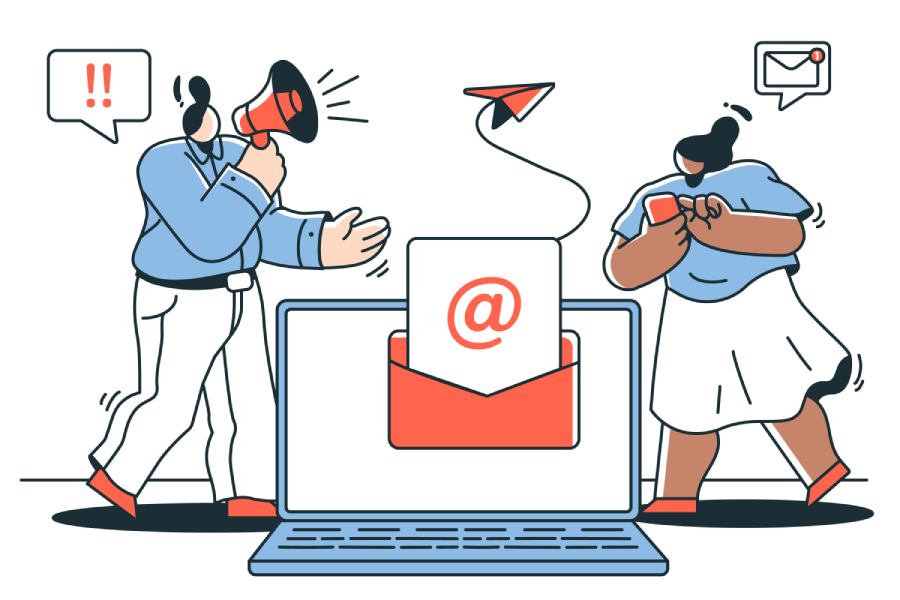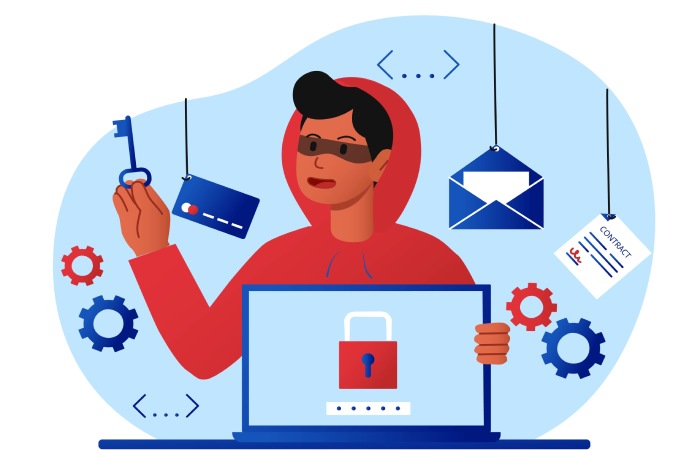Email is the most effective digital communication tool, and valid email addresses are paramount for email marketing. Roughly 320 billion emails are sent every day, but many emails land in the wrong inboxes due to incorrect email addresses. Some emails are not delivered because a false email address is provided while subscribing. This unintentional error makes it difficult for email marketers to reach those customers. The number of email users is set to grow to 4.6 billion by 2025. However, despite the high number of email users, reaching inboxes has become more complicated than before. In such a scenario, email validation is the key to a higher degree of email engagement.
What is Email Validation?
Email validation is the process of verifying mailing lists for invalid, incorrect, non-existent, and undeliverable email addresses to remove them. It checks for typos and email security issues and confirms if the email addresses have a reliable domain. Sending an email to a faulty email address results in its bouncing back, which puts the domain’s reputation at risk. In essence, it damages the sender’s reputation and hampers email deliverability. Email validation ascertains whether the addresses are inactive or unresponsive. Thus, such dormant email addresses are removed to build a quality mailing list for an increased success rate.
What Does Email Validation Validate?
Marketing campaigns cannot succeed without a quality audience. And the audience is as good as the email addresses on the mailing list. Further, the sender must also be aware of the phishing protection strategies of the recipients to improve deliverability. The quality of the mailing list must be maintained from the initial stage of the campaign, i.e., collecting valid and active addresses.
Email validation validates those addresses and confirms that they conform to the syntax to be valid. Email validation also validates the registration of the mailbox of an email address with its receiving domain. More advanced validation solutions ascertain the credibility and active status of the email addresses in the mailing list. They also check for disposable emails to prevent cybersecurity threats such as spear phishing.
Email Validation Vs. Email Verification
Email validation services provide a report that indicates the email address’s status, such as valid, invalid, unknown (cannot be determined), and do not send (spam complainers). On the other hand, email verification services provide a report categorizing addresses under various labels, such as duplicate, catch-all, role-based, free domains, random, temporary, alias, spam trap, etc. In other words, while email validation checks for the accuracy of the email addresses and their registration with a domain, email verification further categorizes recipients’ activity status through a complex process.
How Does Email Validation Work?
Email validation is not a single step to determine the validity of an email based on its address. It consists of a series of checks. The below listed are standard validation checks.
- Syntax: This validation isolates incorrect addresses for additional scrutiny. The email addresses should consist of usernames with the ‘@’ symbol, be within 64 characters, and their domain names must have a maximum of 255 characters.
- Domain: It is common for subscribers to enter fake domains while filling forms. This validation determines whether the mentioned domain is authentic and operational.
- MX Records: This check determines if the domain has any MX (mail exchange) servers. If there is no MX server associated with the domain, it will not accept emails.
- SMTP Server And SMTP Mailbox: This check verifies whether the previous check’s MX servers and the accounts are operational. Further, it helps avoid email bounce backs.
How Can Email Validation Increase Email Engagement?
Email validation is crucial for email engagement. Following are the standard parameters email validation checks to increase email engagement.
- Recipient Authenticity: The primary purpose of an email validation service is to ascertain whether every email address on the mailing list is authentic. Even a well-designed marketing campaign can fail due to a high number of invalid accounts. Email validation can increase email engagement by eliminating unauthentic email addresses.
- High Deliverability: The average email open rate is 21.33%. However, this rate is reduced due to low deliverability. Email validation will result in fewer invalid addresses and make it easier to clear checks that prevent spear-phishing scams and reach the recipients’ inbox. Hence, the chances of engagement will be higher as the campaign will reach more inboxes.
- Sender Score: An email originating from an organization with a higher sender reputation is more likely to land in the inbox. Blacklisted addresses on the mailing list can create a poor sender score. Email validation services flag and eliminate such addresses to save the campaign from going to waste.
- Lower Bounce Rates: It is flagged as undeliverable if an email bounces due to a wrong email address. A high bounce rate results in emails landing directly in the spam folder. Email validation helps eliminate hard bounces and maintain sender reputation for the emails to reach the users’ inboxes.
How to Choose an Email Validation Service?
Now that the basics of email validation have been laid out, users can look for email validation services for their organization. Below are the criteria to consider while choosing an efficient email validation service.
- Online Presence: Prioritize email validation services that are offered as SaaS (Software-as-a-service). SaaS will allow remote email validation as the cloud-based service does not need physical access to the information asset for email security.
- Email volume: The email validation service provider should handle a large amount of email volume when required. Most email lists can be validated instantly if the email validation service is scalable.
- Validation Checks: The more the number of email validation checks, the better for the organization. The service provider should offer multiple validation tests that improve accuracy.
- Integration: Organizations should ensure that email validation service providers can integrate the process with other tools for email forwarding, email hosting, email archiving, etc.
- Reviews: The reviews of other organizations that have used validation services will be a great resource to find out more about what a service offers.
Final Words
Email marketing organizations will find email validation a true lifesaver. It’s an excellent way to clean the mailing list and increase the success of email marketing campaigns. Email validation increases conversions and boosts engagement ratings apart from ensuring email security. It guarantees that the perfectly designed email campaign reaches the recipients’ inboxes. One must choose the right email validation service provider by considering the essential factors to find real success in email marketing.


